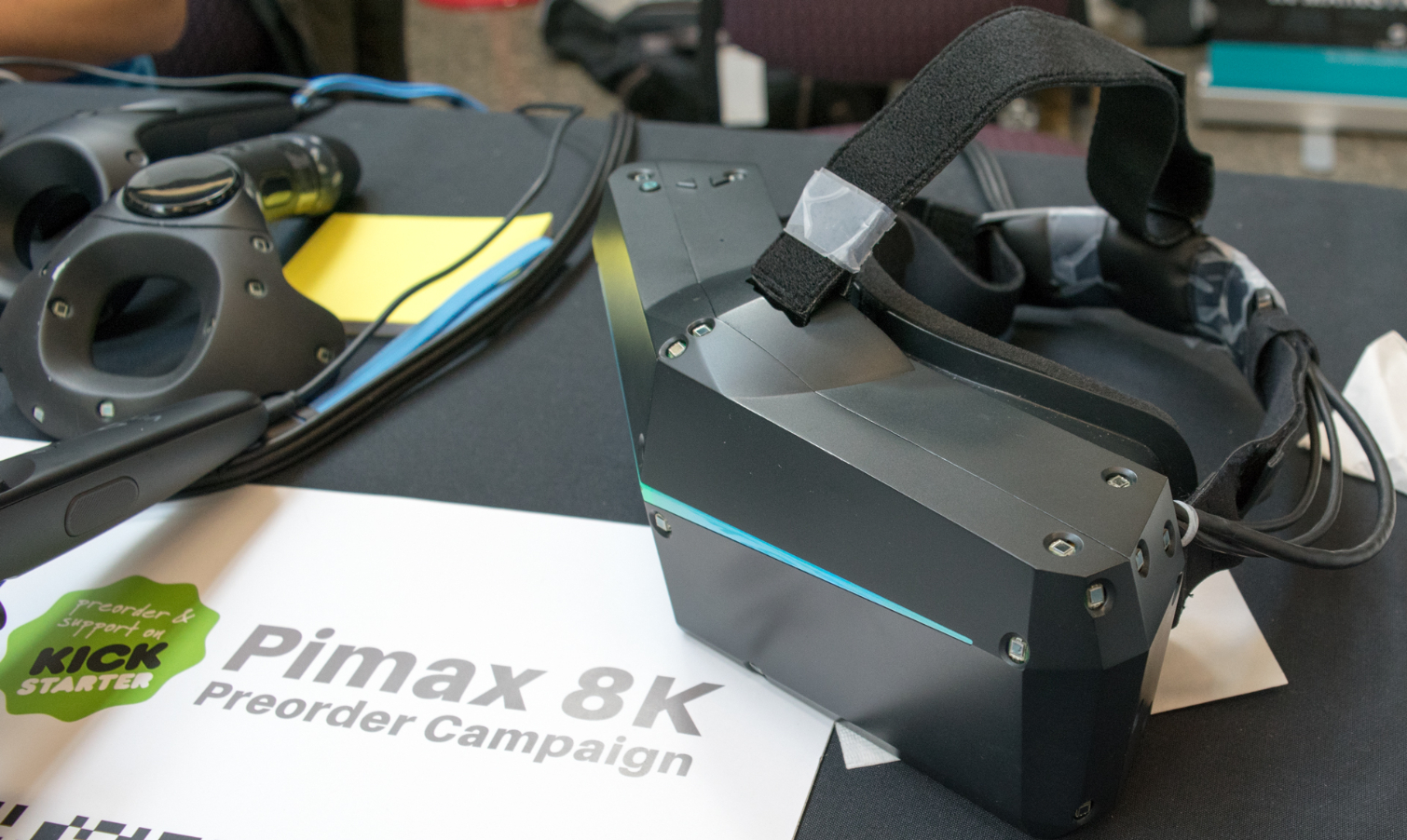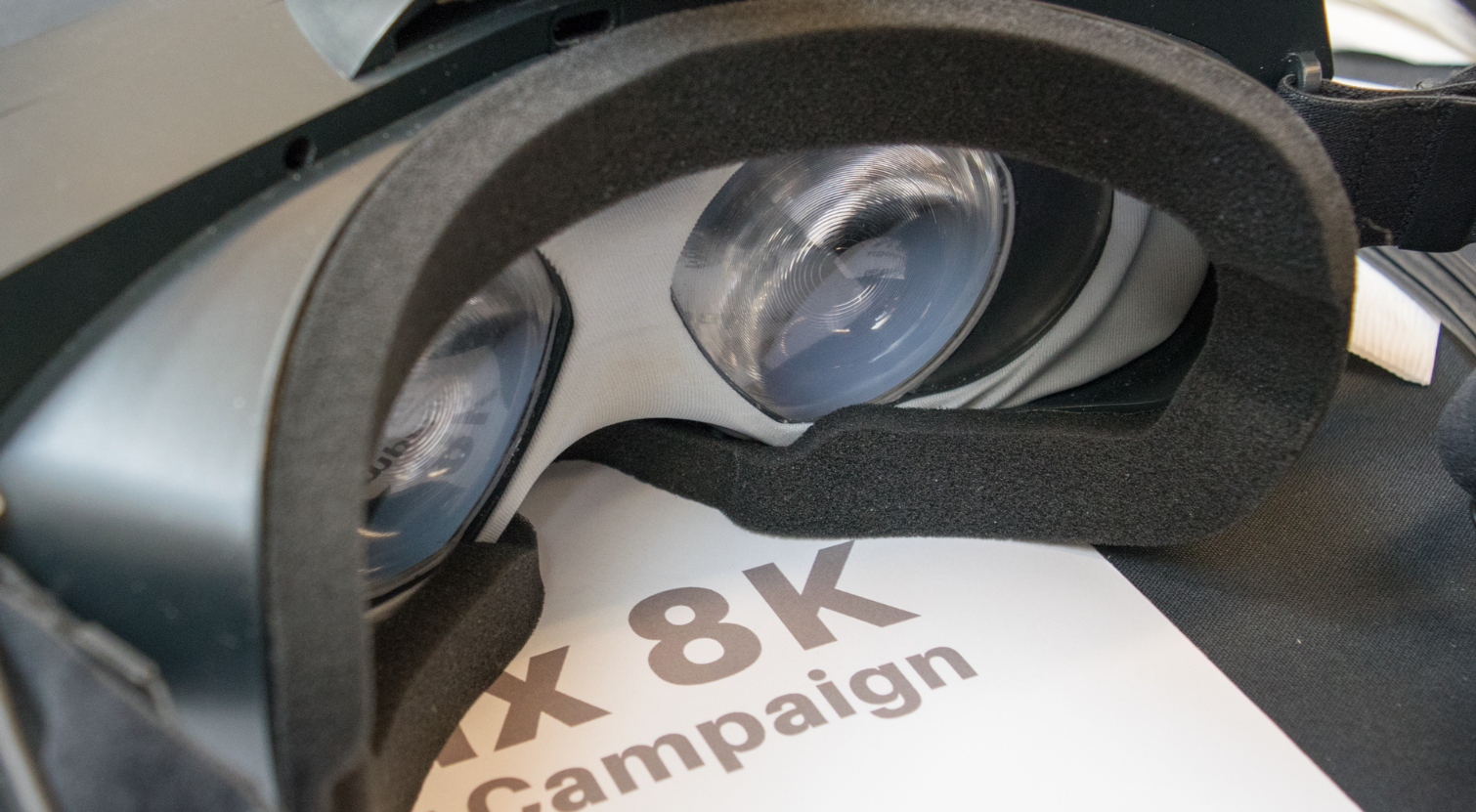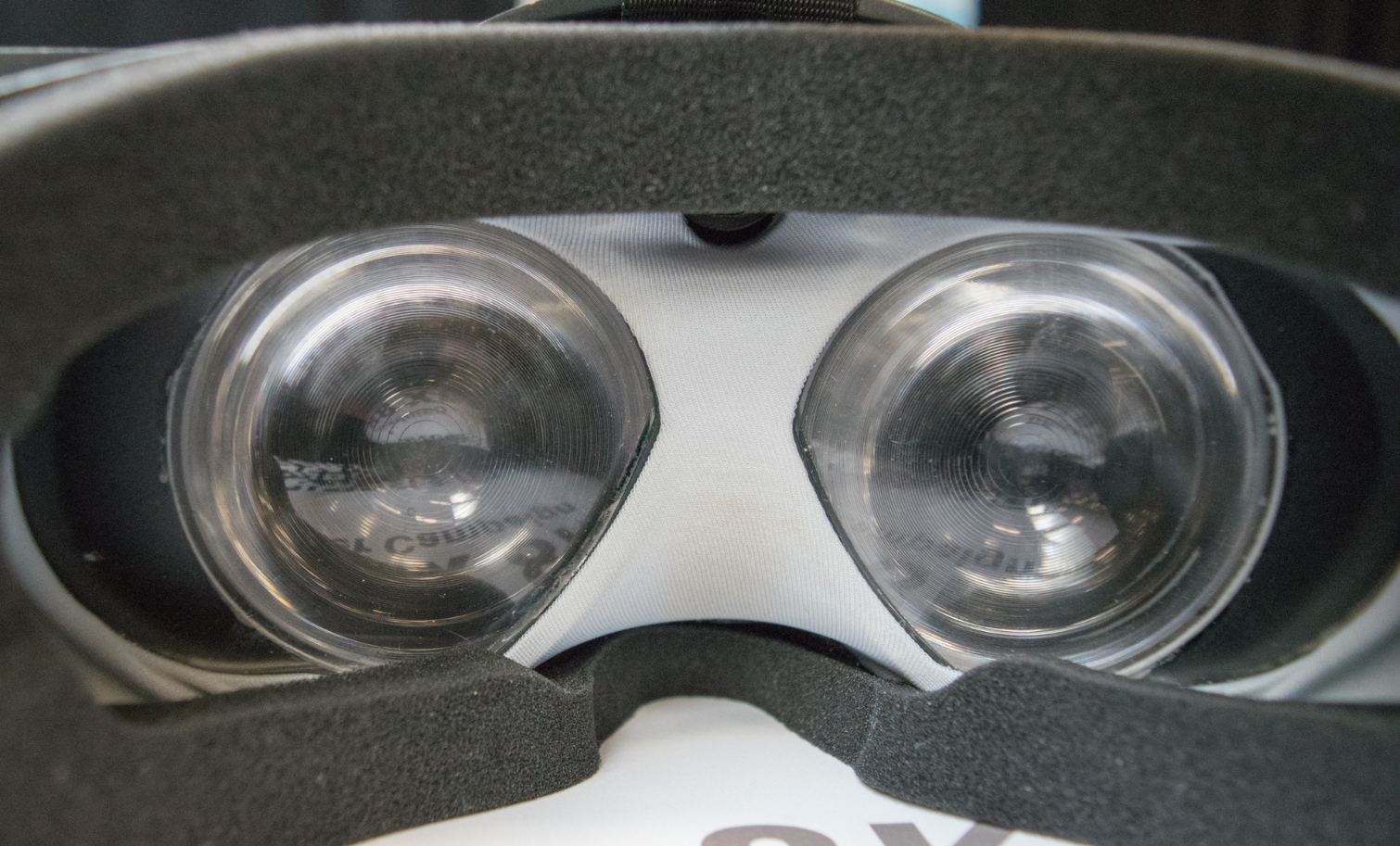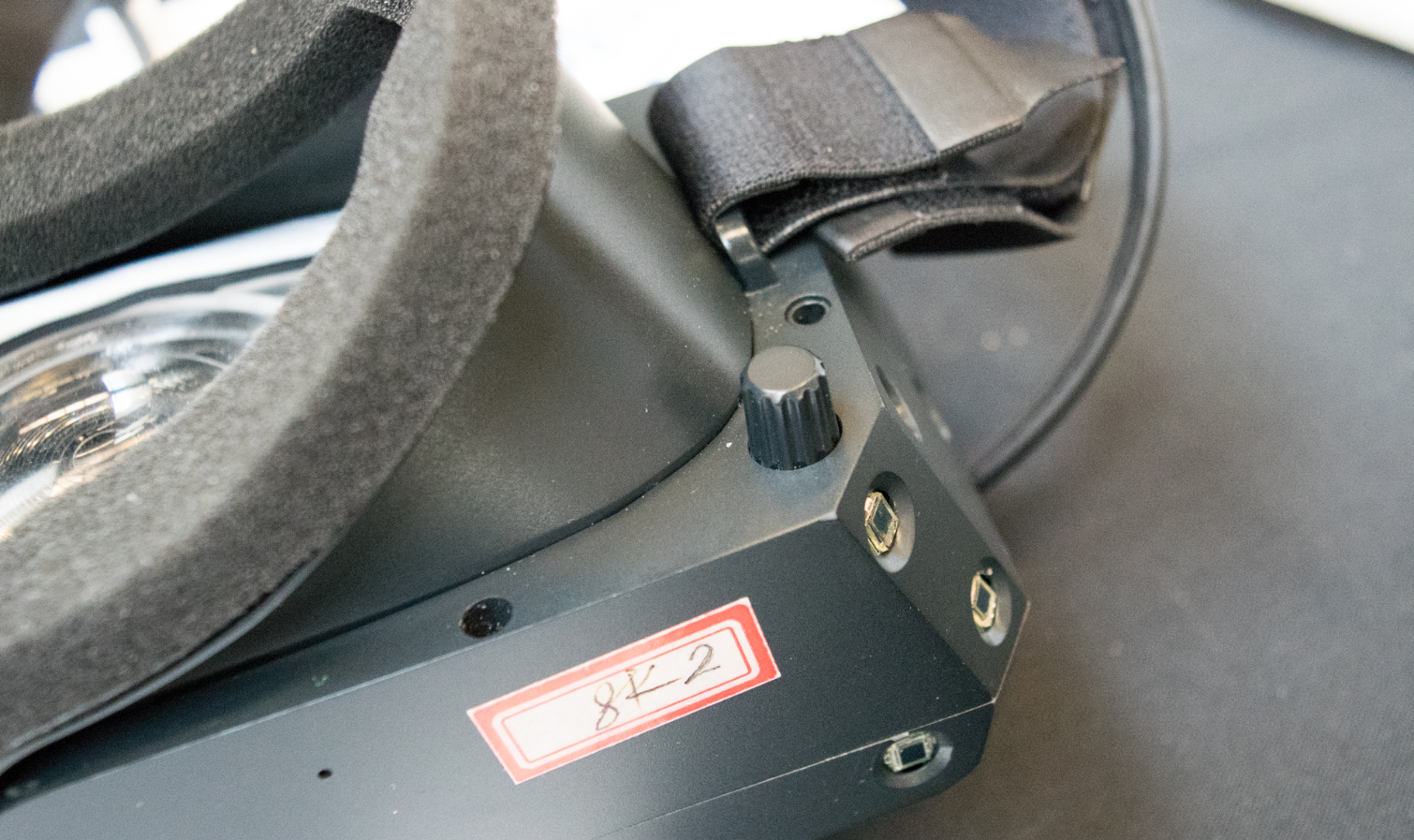Getting Fully Immersed With Pimax's 8K VR Headset (Hands On)
Immersed 2017 was filled with interesting presentations and product demonstrations, but the one that stuck out the most came from a VR company from China called Pimax, which brought a prototype of its upcoming Pimax 8K VR headset.
A few weeks ago, Pimax announced that it's preparing to release the Pimax 8K, which offers a 200-degree field of view. The company revealed the details of the headset and launched a Kickstarter campaign on September 19, and it plans to ship hardware in January 2018.
We wrote about the Kickstarter campaign when Pimax launched, but we had no idea what to expect from the hardware. We haven’t had much experience with Pimax before. We encountered the company’s 4K headset at CES this year, but we didn’t get a chance to test it out, and we weren’t blown away by its specs. It didn’t offer spatial tracking, for example, and had a 60Hz refresh rate instead of the industry standard 90Hz.
The Pimax 8K headset is an entirely different story. We gave the Pimax 8K prototype a whirl at Immersed 2017, and despite being clunky and having already taken a beating from several public demos, we liked what we saw. With some refinements, the final product could be the headset to own.
Pimax’s 8K VR headset offers an ultra-wide 200-degree field of view courtesy of two side-by-side 4K panels. Pimax chose a configuration that’s reminiscent of Starbreeze’s StarVR headset, which we tested at Immersed 2015. When Starbreeze showed us the StarVR headset, we were convinced that we had seen the future of VR because the wide field of view provides an incredible level of immersion. Compared to the Vive, Rift, and PlayStation VR headsets, the difference is night and day. With the currently available crop of VR headsets, the field of view ranges from around 100 degrees to about 110 degrees. That isn’t a terribly narrow field of view, but the Pimax 8K headset lets you see so much more.
The Hardware
The Pimax 8K headset that we tried is just a prototype, so we’ll reserve our critique about the build quality until we see a production model. The device that we tried has traveled around the world for many demonstrations. By the time we got our hands on the headset, it had already taken quite a beating, and it wasn’t working perfectly. During our time with the headset, the screen went dead on us a handful of times. We're not sure what caused the problem, but it took some fiddling around to get it to come back on each time. Though we experienced issues, our time with the Pimax 8K between troubleshooting breaks gave us an idea of what we can expect from the upcoming headset.
The Pimax 8K headset is a very wide HMD made of a super lightweight rigid plastic material. It’s hard to believe how light the headset is considering its size—the Pimax 8K is much wider than a Vive, but it’s also significantly lighter.
Get Tom's Hardware's best news and in-depth reviews, straight to your inbox.
The Pimax 8K headset is surprisingly comfortable, especially for a prototype. The weight undoubtedly plays a significant role in providing a comfortable experience. The head strap works well enough, but it’s inferior to pretty much any HMD head strap, short of maybe the OSVR HDK headsets. The Kickstarter version of the headsets will come equipped with a mechanical strap because of a stretch goal. It’s unclear if the retail production model would also feature the upgraded strap.
The prototype that we tried featured a soft foam cushion with cloth backing, and it seems like Pimax plans to stick with that design. We made a comment about the foam getting sweaty after intense use, and the company rep said that additional foam cushions would be available. We would still prefer to see something like a leather-wrapped cover for the production model.
The clarity of the Pimax 8K is incredible when compared to the Oculus Rift and the HTC Vive. The headset includes two custom-designed low persistence 4K LCD panels offset at something like a 45-degree angle. The Pimax representative who attended Immersed was unfamiliar with the detailed specifications of the custom screen design, and she wasn’t sure which company manufactures the panels. We’re still on the hunt for details about the custom display design and what’s so special about it. We find it curious that a small company like Pimax would have the resources and wherewithal to develop a unique display technology. We suspect that these screens, or a variation of them, will appear in other VR headsets in the future.
The Pimax 8K headset directly addresses one of the biggest complaints about modern VR. Everybody hates the dreaded screen door effect (SDE), which occurs when you can see the gaps between the subpixels of the display panel. We’ve read reports online from people who have tried the Pimax 8K prototype and suggested that SDE is still a concern. In our experience, the Pimax 8K headset doesn’t suffer from SDE at all, and we looked hard to try to perceive any hint of the subpixel grids. We also queried a few other people who tried the headset, and no one we spoke to at Immersed had any concerns about screen door effect.
The production model of the Pimax 8K will have an adjustment mechanism for the interpupillary distance (IPD) but the dial on the prototype isn’t connected to a real adjustment system. We could see the range of adjustment that the Fresnel lenses would have, but we couldn’t adjust them to fit our eye spacing. Pimax said a new prototype should debut at the New York VR Expo on October 26 with a functioning adjustment dial.
Much like the Rift, the Pimax 8K headset features a fabric layer on the inside that protects the internal components from exposure to dust. The prototype features white fabric, and it was already showing signs of discoloration. The Pimax representative said that it would be possible to replace the fabric on the production model when it gets dirty.
There's a USB Type-C accessory port located on the bottom of the headset. The USB interface enables Pimax to offer a range of accessories for the headset, including a Leap Motion hand tracking module and a scent module. Pimax is also developing a wireless transmission device and eye tracking modules, both of which would likely tap into the USB interface.
SteamVR Tracking
The Pimax 8K headset is a SteamVR-compatible device, and it takes full advantage of Valve’s SteamVR Tracking technology. The headset features an array of Triad Semiconductor sensors that are compatible with the base stations from the HTC Vive system. We're not sure if Pimax uses the same sensors as HTC Vive, or if the new headset features Valve's latest sensor design.
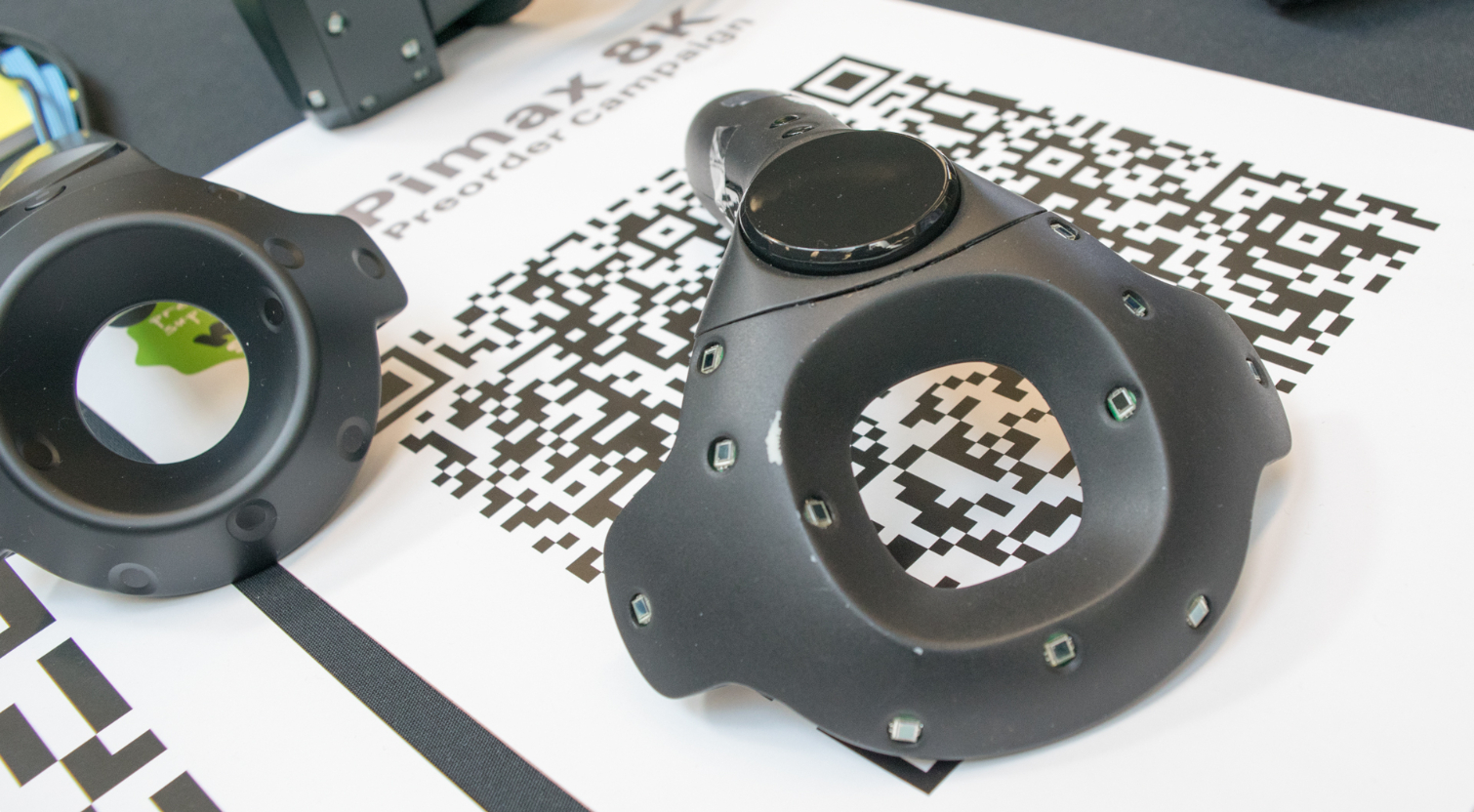
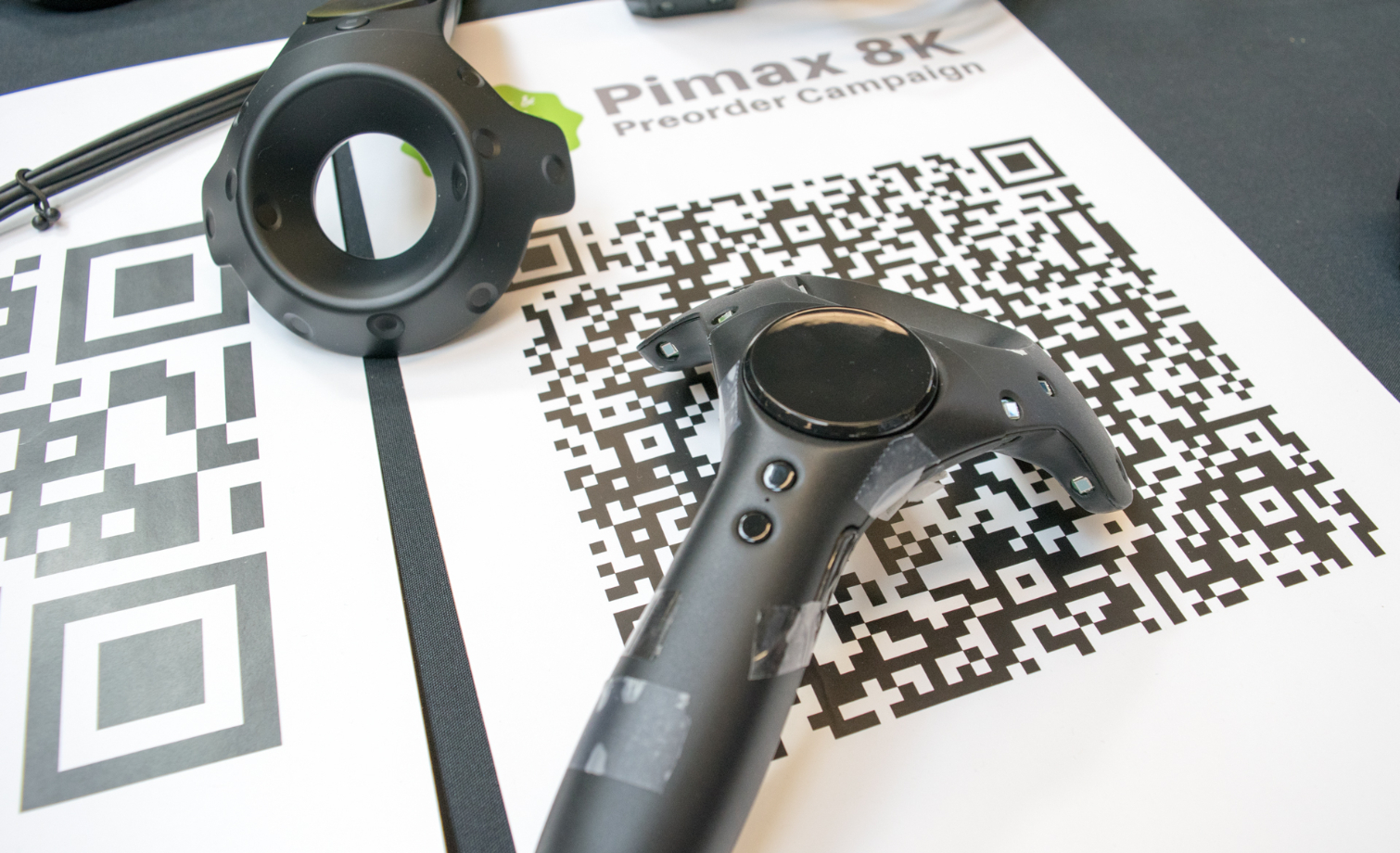
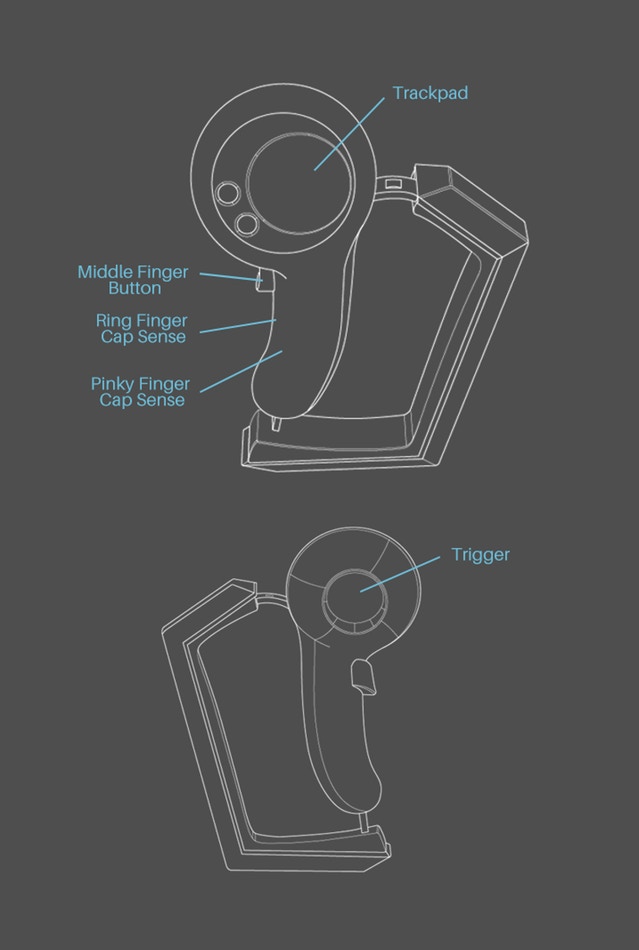
Pimax is also developing SteamVR controllers to go along with the headset. The company had one prototype wand controller on display, but it wasn’t working because someone dropped it and it broke apart. For the demo, Pimax provided a pair of Vive controllers so we could interact with the games, but the controllers wouldn't pair wirelessly. We had to leave them plugged into the nearby laptop, which limited our range of motion.
The broken controller that Pimax brought to Immersed doesn’t represent the final product anyway. The company has shifted gears from making a Vive wand clone to a building a Knuckles-like input device. Pimax didn’t say if it would eventually demonstrate the new controller design at trade events.
Three Demos
We had the chance to briefly try three different experiences from within the Pimax headset. Pimax didn’t have Space Pirate Trainer installed, which would have been a great comparison considering our recent time playing the new release of the game. Instead, we tried theBlue, Fruit Ninja, and the Bigscreen beta.
Our time in theBlue was spent in the Abyss scene, where you visit the bottom of the ocean to see the bio luminous creatures that live down there. The scene starts off in the pitch black, which allowed us to see how well the LCD panel handles dark scenes. The custom LCD panel shouldn’t be as good as an AMOLED display at producing black, but it did better than we would have expected. The dark scenes were sufficiently dark to make the Abyss scene convincing. We were also quite impressed with the contrast levels of the panels. theBlue is always a neat experience, but that game really didn’t do any justice to the Pimax headset's wide field of view.
Fruit Ninja gave us a better perspective of the color reproduction of the custom displays and what the wide field of view really has to offer. The colors were vibrant, and the whole scene was bright, and the extra viewable area gave us a significant advantage in the game. Normally, when you play Fruit Ninja, you must turn your head from side to side to see all the fruit flying in the air. With the Pimax 8K headset, everything was within view at all times.
Next we fired up Bigscreen beta. We wanted to try that experience to see how text would appear with the Pimax 8K. We expected incredible clarity in the menu systems and the 2D desktop window, but we were somewhat let down. The two 4K panels should theoretically produce crisp text, but alas, it was still a blurry mess. We’ve never seen another virtual theater with such a crisp movie screen, though.
We've seen a lot of discussion online about the image in the Pimax headset being stretched, with people suggesting that games are rendered at the same FOV as the Vive and then stretched. We did not observe such characteristics, and the Pimax representative told us that SteamVR handles the native FOV of the headset.
Performance Requirements
The Pimax 8K headset features two 4K displays that operate at 75Hz or 90Hz (adaptive, like the PSVR headset). You would expect that such a high output resolution would result in a low frame rate, but somehow that wasn't the case. Part of Pimax's trickery comes from the scaler found inside the headset. The PC drives two 2560x1440 outputs, and the scaler brings the perceived resolution up to 4K per eye. Pimax also employs technology called Brain Warp, which is similar in function to Asynchronous Timewarp. As a result, the Pimax 8K should demand roughly the same gaming performance as most Windows Mixed Reality headsets.
Is It Worth Buying?
The Kickstarter campaign for the Pimax 8K headset runs until November 3, and the company plans to ship the first run of headsets as early as January. Pimax was seeking $200,000 to bring the Pimax 8K headset to market, and the company has far exceeded its goals. At time of writing, the campaign is sitting north of $2,000,000 with more than 3,200 backers already involved. Pimax has also previously proven that it could deliver a product. Last year, Pimax released the Pimax 4K HMD in select markets, and the company has shipped over 30,000 units to date.
It's still important to understand that a Kickstarter project is a not a guaranteed sale. By backing a campaign, you are betting on the success of the company. If you can't afford to lose the money if the company fails to deliver, then you should probably wait until the hardware hits retail.
The Pimax 8K Kickstarter campaign is ongoing until Friday, November 3. Most of the early bird specials are sold out, but you can still get your hands on a Pimax 8K headset for $499, or the 5K counterpart for $399 if you already own Vive controllers and base stations.
Kevin Carbotte is a contributing writer for Tom's Hardware who primarily covers VR and AR hardware. He has been writing for us for more than four years.
-
cryoburner The biggest problem I see with this headset is that it is being marketed as "8K", but the actual resolution isn't anywhere close to that. Standard 8K resolution is equivalent to four 4K screens, or over 33 megapixels. But even if we add together the resolution of both 4K screens here, it only works out to half that. Then, it sounds like the actual signal coming into the headset is only 1440p per screen, which when added together only works out to less than 7.4 megapixels total, less than the resolution of even a single 4K display, or under one fourth the resolution of 8K. Sure, the headset might offer higher resolution than any of the big-name headsets currently out, but calling it "The World's First 8K VR Headset" is pure marketing fluff, and involves stretching the definition of "8K" in multiple ways.Reply -
jossrik Calling these 8k is no different than naming your tower cooler "Ice" or "Chill". Marketing does it's job in nearly all aspects of computing, it's fine. I understand, cause I have the same problems listening to people talk about pyramids being made by aliens... Yet I digress. 7200RPM HDDs as fast!Reply -
burkhartmj Reply20301644 said:That is suspiciously inexpensive.
That's because it's literally just for the headset, not even the sensors. They specifically state in the reward box to get the cheaper tiers only if you already have a Vive so you can use its tracking sensors. For controllers and tracking sensors to be included you're looking at $799. -
Heliosurge Yes Starbreeze shouldn't have called there StarVR 5k panoramic (2x1440p). LolReply
Most are using the combined veetical lines as a showcase value. Vr headsets need to be seen as special purpose monitors & as such have a different standard spec reporting than conventional monitors. As for upscaling? While it is dual qhd input, the panels native resolution remains valid as its pixel/subpixel value is present vs 2.5k display which has less.
One of the key point problems is no real standardized spec reporting with VR headset manufacturers which makes it challenging to compare headsets by specs.
Overall Resolution: Panel's Native + input
-important for gpu requirement
Panel Type: CLPL/OLED/LCD
Sub Pixel Layout: RGB/PENTILE
-This affects quality of SDE (rgb is better)
Brightness/Contrast
-Lux, Nits (one or botg)
-not dynamic contrast real contrast
Latency & Frequency
FoV
-Vertical/horizontal
-Diagonal -
bernardcozier I actually like the fact it is doing upscaling from 1440p. 1440 is more than good enough....the main advantage you get here is the absence of Screen Door Effect...that's where each 4K per eye display really shines and it's not necessary for the game to render native 4K per eye which would bring the games to a crawl anyway.Reply -
Heliosurge Agreed @bernardcozier. As an owner of tge PiMax 4k i can say the upscaler works well. Having been at Immersed i can assure you the 8k is like night & day to the 4k model!Reply -
olli.honkasalo @HELIOSURGE, isn't Pimax 8K just two higher refresh rate Pimax 4Ks strapped next to one another with Vive tracking? I mean, it's not a bad thing, but the resolution is the same, scaling is the same and they both use LCD-panels.Reply
